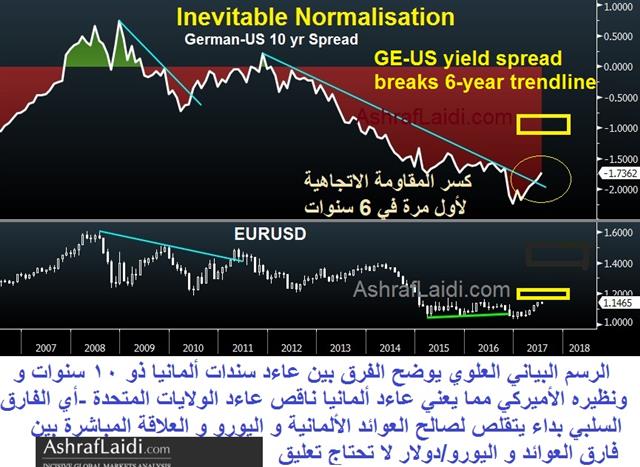USD Damaged by Relative Growth & Inflation Change
In January, most of the FX world jumped on the wave of a positive USD outlook based on the easily articulated but inaccurate theory of diverging monetary policies-- that the Fed will be the only central bank tightening policy, while the rest stuck in easing or neutral gear. The theory was based on the assumption that further pick-up in US and global inflation would keep the USD ahead.

Relative Reality
Instead, the reality emerged as follows: Although US monetary policy was well past the early stages of its TIGHTENING monetary cycle, the ECB, Bank of Canada and Bank of England were at the LATE phases of their multi-year EASING monetary policies, which meant that the market adjustment in yields and currencies resulting from a gradual reversal in the policies of the ECB, BoE and BoC would be greater than that of a timid continuation in the policy of the Fed.
Markets take more notice (and adjust accordingly) when a long-established policy is near reversal (ECB, BoC, BoE), than when a long-held policy simply continues (Fed tightening). Thus, any gradual improvement, or no change in global growth and inflation proved (and will prove) more rewarding to non-USD currencies. There is more scope for relative tightening by the ECB, BoE and BoC than by the FED.

What's ahead?
USD weakness is likely to continue for as long as goldilocks global inflation remains intact due to the following:
1- Lack of rapid inflation does not necessarily mean the return of disinflation, which should enable policy normalisation in the ECB, BoC and even BoE and even by the Fed, yet the latter faces more upside in yields because growth metrics are tapering off.
2- Eurozone growth expected to return to 2.0%, while US growth has been revised down to 1.9%, which reduces Fed's tightening momentum (weaker NFP and other hard data).
3- Any resurfacing rhetoric by the Trump administration to engage on the protectionist trade route should weigh on the greenback for the reasons I mentioned back in January and inferred that EURUSD will regain $1.10 towards end of Q2 at a time when many were calling for sub-parity.
EURUSD is now anticipated to reach $1.18 in Q4 and $1.23 in Q1 2018.







